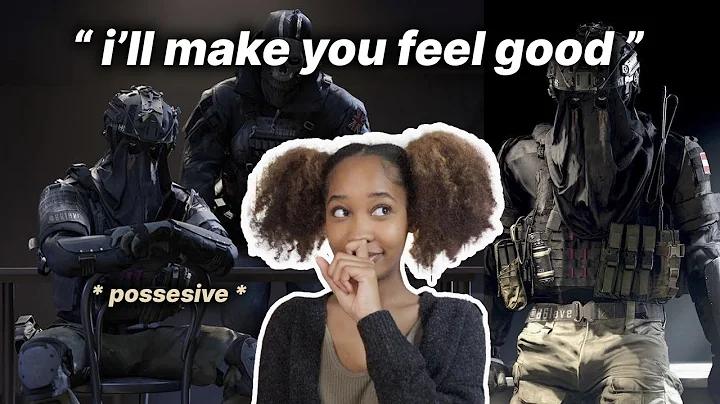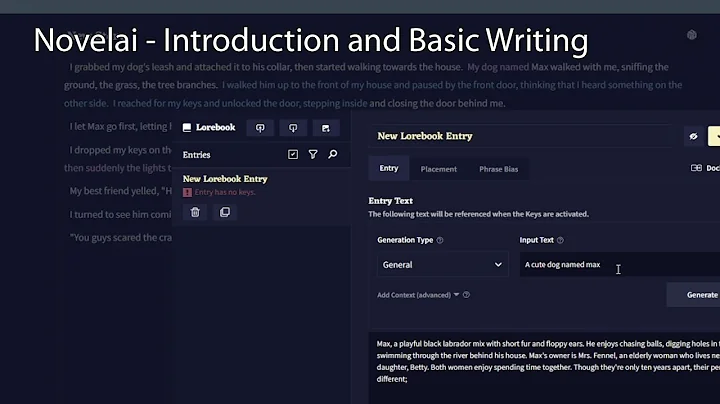Unlocking Image Transformation: CycleGAN Explained
Table of Contents
📝 Introduction to Generative Adversarial Networks (GANs)
🔄 Understanding the CycleGAN Framework
Definition of CycleGAN
Understanding the Objective
🖼️ Image to Image Translation Task
Unpaired Image to Image Translation
Challenges in Traditional Approaches
🎨 Applications of CycleGAN
Artistic Style Transfer
Domain Adaptation
🤖 The Architecture of CycleGAN
Generators and Discriminators
Training Process Overview
🔄 Loss Functions in CycleGAN
Adversarial Loss
Cycle Consistency Loss
📉 Evaluating CycleGAN Performance
Subjectivity in Evaluation Metrics
Comparative Studies
🔄 Advancements and Limitations
Enhancements in Training Techniques
Addressing Model Limitations
💻 Implementing CycleGAN
Overview of Implementation
Accessing Code and Repositories
❓ Frequently Asked Questions (FAQs)
Introduction to Generative Adversarial Networks (GANs)
Generative Adversarial Networks (GANs) have revolutionized the field of artificial intelligence by introducing a novel approach to generating realistic data. Proposed by Ian Goodfellow and his team in 2014, GANs offer a powerful framework for training generative models through adversarial learning.
Understanding the CycleGAN Framework
Definition of CycleGAN
CycleGAN, short for Cycle-Consistent Adversarial Networks, is a type of GAN introduced to tackle the task of unpaired image-to-image translation. Unlike traditional GANs, CycleGAN does not require paired data for training, making it particularly useful in scenarios where obtaining such data pairs is challenging.
Understanding the Objective
At the core of CycleGAN is the objective to learn mappings between two domains, typically referred to as
X and
Y. The goal is to translate images from one domain to another while ensuring the translated images remain realistic and preserve relevant features.
🖼️ Image to Image Translation Task
Unpaired Image to Image Translation
One of the distinctive features of CycleGAN is its ability to perform unpaired image-to-image translation. This means that instead of relying on explicitly paired data samples, CycleGAN learns to translate images between domains based solely on the available data distributions.
Challenges in Traditional Approaches
Traditional image translation methods often require paired data, which can be difficult or expensive to obtain. CycleGAN addresses this limitation by employing a cycle consistency loss, ensuring that the translated images maintain the characteristics of the original domain.
🎨 Applications of CycleGAN
Artistic Style Transfer
CycleGAN finds applications in artistic style transfer, allowing artists to transform images into various artistic styles without the need for paired training data. By leveraging the power of adversarial training, CycleGAN can generate visually appealing stylized images.
Domain Adaptation
Another key application of CycleGAN is domain adaptation, where it facilitates the transfer of knowledge from a source domain to a target domain without requiring paired data samples. This capability is invaluable in tasks such as image recognition and semantic segmentation across different domains.
🤖 The Architecture of CycleGAN
Generators and Discriminators
In CycleGAN, two generators (
G and
F) and two discriminators (
D
X
and
D
Y
) work in tandem to learn the mappings between the two domains
X and
Y. The generators aim to translate images between domains, while the discriminators assess the realism of the generated images.
Training Process Overview
During training, the generators and discriminators engage in a minimax game, where the generators strive to generate realistic images to fool the discriminators, while the discriminators aim to distinguish between real and generated images. This adversarial training process encourages the generators to produce high-quality translations.
🔄 Loss Functions in CycleGAN
Adversarial Loss
Adversarial loss guides the training of the generators by encouraging them to generate images that are indistinguishable from real images to the discriminators. This adversarial objective fosters the generation of realistic translations between domains.
Cycle Consistency Loss
Cycle consistency loss enforces the consistency between the original and translated images across cycles. By ensuring that translating from one domain to another and back results in images close to the originals, cycle consistency loss helps maintain the semantic content of the images.
📉 Evaluating CycleGAN Performance
Subjectivity in Evaluation Metrics
Evaluating the performance of CycleGAN and similar models poses challenges due to the subjective nature of image quality assessment. Metrics like perceptual studies and human judgment are often used to gauge the realism and fidelity of generated images.
Comparative Studies
CycleGAN's performance is often benchmarked against other image translation methods, including paired approaches and alternative GAN architectures. Comparative studies help assess CycleGAN's effectiveness across different tasks and datasets.
🔄 Advancements and Limitations
Enhancements in Training Techniques
Researchers continue to explore various training techniques and architectural modifications to enhance the performance and stability of CycleGAN. Techniques like patch-based discriminators and advanced loss functions contribute to improving the quality of generated images.
Addressing Model Limitations
Despite its versatility, CycleGAN has limitations, particularly when it comes to complex image transformations and geometric changes. Challenges such as mode collapse and information loss require further research to address and mitigate effectively.
💻 Implementing CycleGAN
Overview of Implementation
Implementing CycleGAN involves understanding its architecture, loss functions, and training process. Open-source repositories and code examples provide valuable resources for developers looking to experiment with CycleGAN and adapt it to their specific use cases.
Accessing Code and Repositories
Repositories containing CycleGAN implementations, along with documentation and tutorials, are readily available online. These resources enable researchers and practitioners to explore CycleGAN's capabilities and contribute to its development and improvement.
❓ Frequently Asked Questions (FAQs)
Q: What distinguishes CycleGAN from traditional image translation methods?
A: CycleGAN excels in unpaired image-to-image translation, eliminating the need for explicitly paired training data. Its use of cycle consistency loss ensures that translated images maintain fidelity to the original domain.
Q: How does CycleGAN handle domain adaptation tasks?
A: CycleGAN facilitates domain adaptation by learning mappings between source and target domains without requiring paired data samples. This capability is valuable in scenarios where transferring knowledge across domains is necessary.
Q: What are some limitations of CycleGAN?
A: CycleGAN may struggle with complex image transformations and geometric changes, leading to issues like mode collapse and information loss. Researchers are actively exploring solutions to mitigate these limitations and enhance CycleGAN's performance.
Q: Where can I find resources for implementing CycleGAN?
A: Open-source repositories and code examples for CycleGAN implementation are available online, along with documentation and tutorials. These resources empower developers to experiment with CycleGAN and apply it to various tasks and domains.
Q: How is CycleGAN evaluated in terms of performance?
A: Evaluating CycleGAN's performance involves subjective assessment metrics like perceptual studies and human judgment, along with comparative studies against other image translation methods. These evaluations help gauge CycleGAN's effectiveness and identify areas for improvement.
By delving into the intricacies of CycleGAN, researchers and practitioners can harness its






































